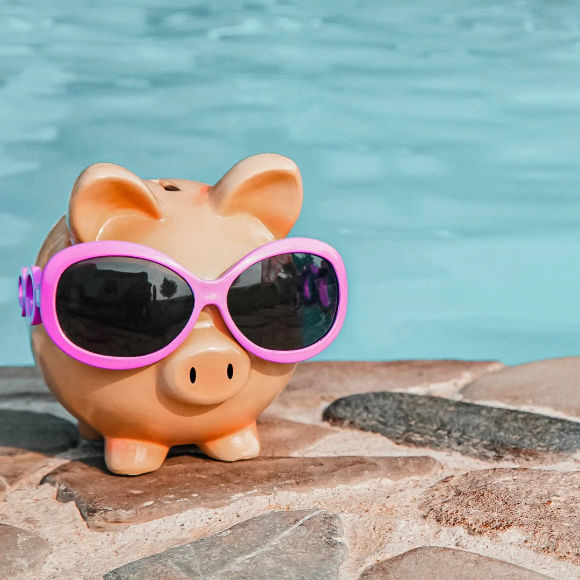Why haven’t you started your fashion brand yet? The answer is always one of two things. The first one is,“I’m not ready. I will get started after I [insert whatever life-changing event needs to come and pass here].” To this, I always respond, “But if not now, then when?” Because there is ALWAYS going to be something preventing you from getting started. The second reply I often get is, “I don’t have enough money.” So if cash is what’s holding you back, and you wish you could find the perfect fashion investor (because surely someone would love to invest in your great idea) – this blog post on fashion funding is for you.
HERE’S WHAT YOU WILL LEARN ABOUT:
- Self-funding
- Friends + family
- Crowdfunding
- Grants
- Bank loans and alternative loans
- Private fashion investors
- Additional resources
*I will discuss your funding options from most startup-friendly to least.
SELF-FUNDING

Self-funding is my number one recommendation for funding a fashion startup and this is why:
You might not need as much money as you think you do to start your fashion brand. And when you self-fund, you are more likely to take your time learning the right way to do things. Self-funding serves as a speedbump to slow you down so that you make thoughtful decisions rather than wasting your hard-earned cash.
How much money does it take to start a fashion startup? I usually say 10k is the sweet spot to get started. But I’ve had students start with only $2,500 and grow from there.
A word of advice for self-funders, regardless of how much capital you are starting out with: start small and slowly scale from there. Invest your initial dollars in education so you avoid making huge mistakes that cost you thousands.
There is one way I can tell if people should not be gambling with their life savings – it’s when they tell me this:
“I want to take your course, but I can’t afford it right now, so I am going to do it on my own.”
Now, my fashion industry programs range from $349-$3,000. And here’s the thing. If you can’t afford to get educated in an industry you know nothing about, then you definitely can’t afford to lose $1,500 on a bad sample.
The entire cost of my most expensive program could be wiped out by one rookie mistake (take it from my students, my mentorship has saved them all from multiple mistakes).
The reality is, that you will not do everything perfectly on your own, and you will lose money. No, you aren’t special, or the exception to the rule.
And, it kills me to watch that happen to people. Waste the little money they have on a dream that doesn’t work out.
Keep saving, and in the meantime, keep learning. I put out so much free content. Take the time to learn as much as you can as your bank account grows. Because the more you learn, the less chance you have of making a mistake that wastes all your hard-earned savings.
Check out this interview with the founder of Fubu, who had his clothes on some of the most famous celebrities at the time and was STILL working full time at Red Lobster.
FRIENDS + FAMILY
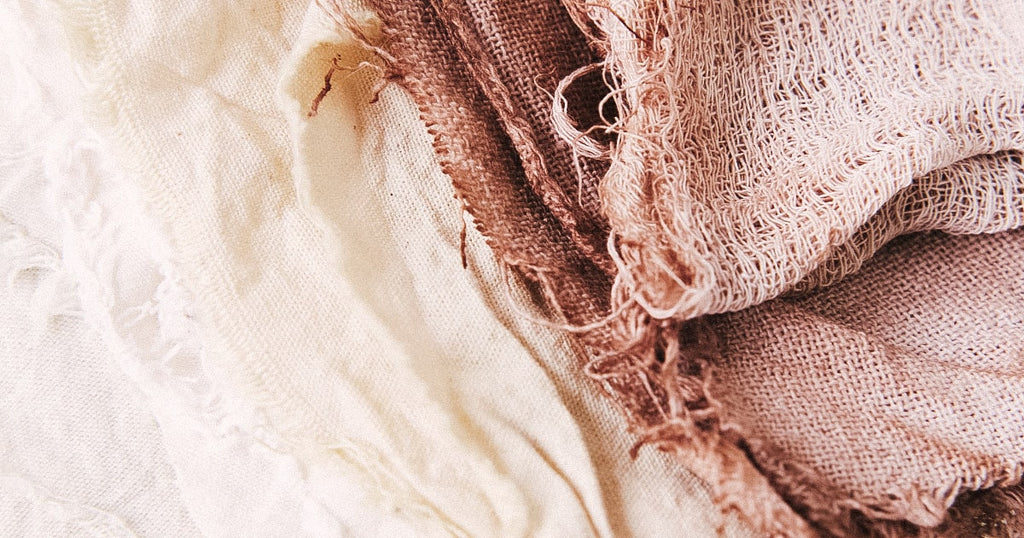
I always say that when you’re starting a fashion brand, you will quickly realize there are two different types of people in the world: people who are rooting for you to fail (jealous much?), and people who are willing to go out of their way to support you in any way they can.
It’s interesting seeing which people in your life turn out to be the naysayers and which people become your cheerleaders because you can’t always predict it. Some of my wealthiest friends complained over the $150 price tag of my ethical and sustainable skirts, while they dropped serious cash at Bloomingdales on “designer” made-in-China garbage.
Then I had other people in my life surprise me by showing up to support me at popups and in all aspects of my business.
My point is, you don’t know who might be willing to help unless you ask. People aren’t mind readers. They don’t know where you are struggling unless you open up and tell them.
So when it comes to asking friends and family members for money to invest in your business, it can feel awkward. But you know what? Being an entrepreneur involves a lot of “feeling the fear and doing it anyway” if you want to be successful.
I RECOMMEND PACKAGING YOUR REQUEST FOR CAPITAL IN ONE OF THE FOLLOWING WAYS:
- Gifts
- Loans
- Equity
GIFTS
Obviously, gifts are the most ideal form of funding you can get from friends and family to support your business since it’s money you don’t have to pay back.
Nervous about asking for something as bold as a free investment into your business?
Here’s a little trick I tell my students to try:
Ask for the cash, like any other gift, as a birthday or holiday present. Gift-giving is often super stressful for people, so they’ll probably appreciate it if you just tell them what you want (this is why wedding registries exist).
Before the next holiday or gift-giving occasion, you can simply send out an email or text to the people in your life who typically gift you and say, “What I’d love more than any material gift is some cash to help grow my small business.”
Remember, it’s always okay to ask. And to make it less awkward, just make it clear that there is zero pressure and no hard feelings if they don’t want to.
LOANS
This is money you would borrow from friends or family members and pay back later.
Paying them back can be done in two ways: with interest or without interest.
For example, you can pay back a loan with 10% interest, so if you borrow $1,000, you would pay back $1,100, probably by a mutually agreed-upon date.
If your friend or family member agrees to loan you money without interest, you would just pay back the $1,000.
Now you might be thinking, I might as well just go to a bank rather than inconvenience my loved ones. But the problem with this is that often small fashion startups don’t qualify for bank loans (we will talk more about bank loans in a minute).
If you find that you can’t get money from traditional financial institutions, then taking out a loan, or several loans, from friends and family members, might be a good way to go.
Quick tip here – make sure you are very clear about the terms of borrowing the money and when it needs to be paid back.
EQUITY
Equity means stock in your company or a percentage of ownership. You are essentially selling part of your company for cash.
So, for example, you might borrow $10,000 from a lender in exchange for 10% of your company. So, if you make $50,000 in profits per year, you would owe your lender 10% of that, or $5,000 per year.
A common mistake I see is that brands are desperate for cash when they are starting out, and cash can be hard to find, so they offer way too much equity (stake in the company) in exchange for tiny investments.
I know 10k might sound like a lot to you now, and maybe you feel like it’s worth giving away 25% of your company. But when you grow and scale (and you will), it’s going to feel like an unfair deal.
Think of it this way – if you make $100,000 per year, that means you need to give $25,000 to your original fashion investor every year… forever. All for a measly $10k initial investment.
So. Please be careful about the deals you work out in your early stages. And be careful not to undervalue your brand’s future worth.
CROWDFUNDING
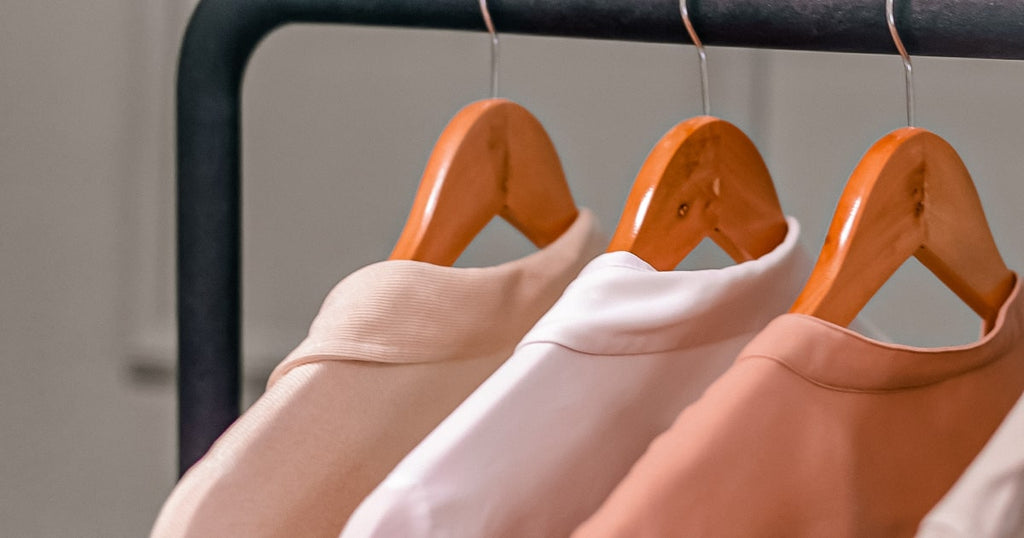
I bet Kickstarter comes to mind when you hear the word “crowdfunding” and the unicorn stories you’ve heard of brands raising millions of dollars on the platform.
WHEN IT COMES TO CROWDFUNDING, THERE ARE ACTUALLY FOUR DIFFERENT TYPES:
- Donation
- Reward
- Lending
- Equity
DONATION
An example of donation-based crowdfunding would be GoFundMe. Basically, donors don’t get anything back in return for their investment. This is a great option for brands that have a charity component.
REWARD
This is the Kickstarter model. Where customers pre-purchase an item for a discount or for free stuff.
LENDING
Leninvest is a great platform for this type of crowdfunding campaign. With this type of campaign, you are responsible for paying back your fashion investors their initial investment plus a percentage of your profits for a set period.
EQUITY
For this form of crowdfunding, try Seedrs. Fashion investors will get equity (read, ownership forever) of your company. I recommend this method the least because I am a control freak and don’t want to have to deal with a partner in my company forever because they gave me money once 10 years ago.
But I recognize that everyone is different and needs to make the right decision for them. So here it is, equity included in the list.
Still not sure if crowdfunding is right for you? Here are a few pros and cons.
PROS OF CROWDFUNDING
- Minimizes risk – with a pre-sales model like Kickstarter, you will only produce what you sell, so your chance of having a bunch of unsold inventory is basically zero.
- Validation – again, with Kickstarter, the people buying your product are real customers interested in what you are making. They are so interested, in fact, that they are willing to give you money now and wait, possibly
- Product research – if your crowdfunding campaign is a slam dunk, that gives you a pretty good indication that your idea is good without spending tons of money on production.
- Access to cash – crowdfunding puts money in your pocket immediately, allowing you to pay off your product development and production bills right away.
- months to receive what they paid for. This proves your idea is a good one, which should give you an instant confidence boost.
CONS OF CROWD FUNDING
- It’s public – many people think that their idea will be stolen if they publish their idea on Kickstarter before they are 100% ready to do a full launch. Maybe. But the truth is that most people are too lazy to go through all the effort it takes to steal your idea and build a brand. And the ones that do . . . well, let me put it this way: a cheap Chinatown Louis Vuitton knockoff will never be worth as much as the real deal. Sometimes, factories actually do scour Kickstarter to try and steal ideas and beat them to market with even lower factory direct-to-consumer prices. But again, a copy is never worth as much as the original.
GRANTS
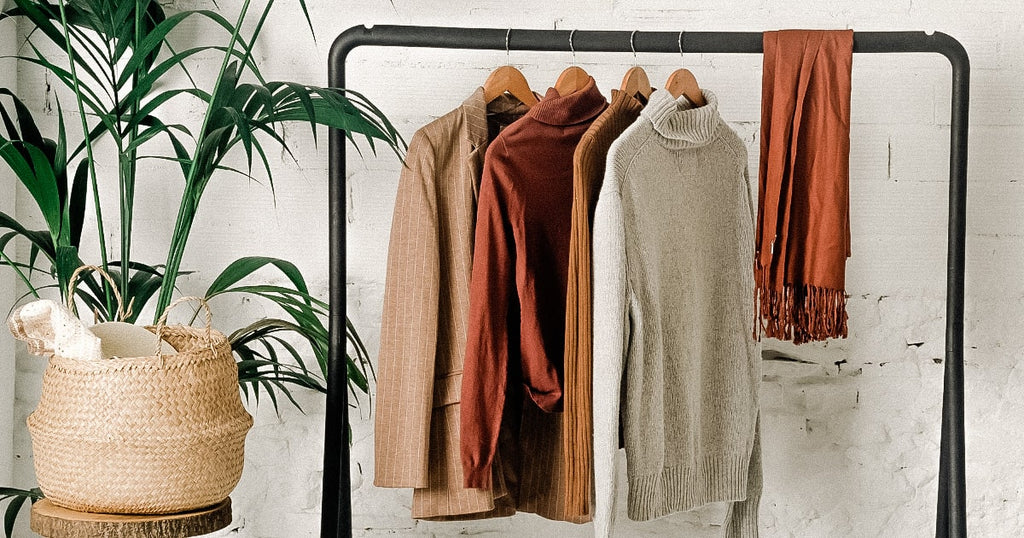
Grants are free money. But they require A LOT of work.
To find out about grants and other fashion funds, scroll to the bottom of the page for additional resources.
Grants are a lot of paperwork and often require presentations to boards, meaning they require serious work.
One of my students worked for nearly a year to get a grant. She had to fill out forms, write reports, and even present to a panel. Basically, she had to prove she did her research, that her idea was a good one, and that she had a plan to make more money in the future once she got the grant money.
And after all that hard work, she got about $35,000 to start her company, which is pretty amazing if you ask me.
The nice thing about grants is that they do not need to be repaid. The downside is that they do come with strings attached.
For example, grant money usually needs to be spent in specific ways. And the people who give out the grants want to make sure their investment is as impactful as possible, so you might have to have quarterly, monthly, or even weekly check-ins with them to ensure you are on track.
Quick tip for getting grants. Because grants are essentially free money, they are incredibly competitive. So you want to make sure to put your best foot forward. Really do the research and crunch those numbers so you can prove your idea is viable and will make money.
If you need help with applying for grants, I have a program called Make A Plan + Fund Your Brand that can have you looking like a startup pro in only one week.
THERE ARE FIVE TYPES OF GRANTS FOR SMALL BUSINESSES
- Federal
- State
- Country and City
- Company
- Organization
Federal grants are given by the federal government, like by the United States of America.
States grants are organized and given by states, like New York, for example.
County and city grants, well, I think you are getting the idea here. They would be given by, say, New York City.
Companies sometimes give other companies grants (Tory Burch and Spanx are two famous examples of companies that give out grants to small businesses, and I have tons of other resources at the end of this article).
And, lastly, organization grants are given by non-profits. One of the most famous non-profit grant-givers is the Gates Foundation.
BANK LOANS AND ALTERNATIVE LOANS

Ah, bank loans. Bank loans are usually one of the first forms of funding new brands consider, but it’s #5 on my list. This is because it’s way more formal than a loan from a friend or family member.
Yeah, if you can’t pay your friend back, it’s super embarrassing. But chances are they will understand and work with you to break your payments up or extend the timeline. When you can’t pay the bank back, it can cause detrimental ripple effects throughout your life. Like lowering your credit score (meaning trouble renting or buying a home or car in the future).
Starting a new business is risky, and if things don’t work out, you want to make sure your failure won’t negatively impact your finances for the next decade. That is why loans are fifth on my list, and I suggest going with self-funding, loans from friends and family, or crowdfunding before exploring this option.
Also, if I’m going to get really real, a lot of people don’t qualify for a bank loan, or don’t qualify for as much as they had hoped to borrow.
For example, one of my students could only qualify for a couple thousand dollars, not the tens of thousands they were hoping for. Factoring in her monetary restraints, we used a combination of other options to get the money she needed.
While we’re on the topic of bank loans, it is worth it to also mention alternative loans . . .
Since the pandemic, it feels like everyone is lending money. That is because the big companies that have cash on hand to spare are realizing that one of the easiest and quickest ways to beef up their bottom line is to loan that cash out to small businesses for a premium. This means that if you borrow $100, you need to pay them back $110.
The companies that are super easy to get cash from (and loans are based on your current business volume) are Shopify, PayPal, and Amazon. Many businesses are finding that these alternative lending options are a great substitute to more traditional loan options.
PRIVATE FASHION INVESTORS

This is a common email I get:
“I have been following you for a while and love all your free advice. I want to work with you, but I don’t have all the money I need to start my brand yet. As soon as I can find an investor, I want to work with you.”
And to that, I think to myself, “Okay, see you never.”
I know that sounds harsh, but that’s the truth. Here’s why . . .
Fashion investors want to make money. So they are only giving money out to companies that they think are a safe bet. The way you prove yourself to a fashion investor is by proof of concept and a proven track record.
But how do you get a proof of concept to show to a fashion investor if you don’t have any money?
Easy. By using any of the money-raising options above.
I don’t want to say never, but big investment firms rarely invest in an idea. They want to see numbers and proof.
VC AKA VENTURE CAPITAL
We all hear stories about brands that get millions in funding. Like Rent the Runway, which raised $526 million, and Allbirds, which raised $202 million.
While numbers like these feel mind-blowing and life-changing, there are three things you need to remember.
One, you are getting money in exchange for equity. Think, lifelong business partners. Think, getting married without the option of divorce.
Secondly, seed funding isn’t a payday as silicon valley might have led you to believe. It’s not meant to be spent on fancy cars and mansions (that’s how you end up in prison).
And third, with VC money, there are strings attached. Often, VC firms become very involved in the brand’s daily operations, trying to maximize profits and make back the money they invested and then some.
If you don’t want to take a backseat to your company’s business and financial decisions, then VC money might not be for you.
Personally, I am waving red flags in your face, urging you not to take this road.
ANGEL INVESTORS
There is one other option, and that is getting funding from an angel investor. While a VC firm is a company, an angel investor is typically one high-net-worth person who invests in your company for equity.
The benefit of an angel investor over a VC firm is that you are working with only one person instead of an entire company. So business decisions feel much more intimate, and you might feel like you have more say in what is going on with your own company.
WHAT DO YOU THINK?
And that’s it! Everything you need to know about fashion funding.
Before I go, I have one last question . . .
If you need money to start your fashion brand, which fundraising option will you start with?
ADDITIONAL RESOURCES…
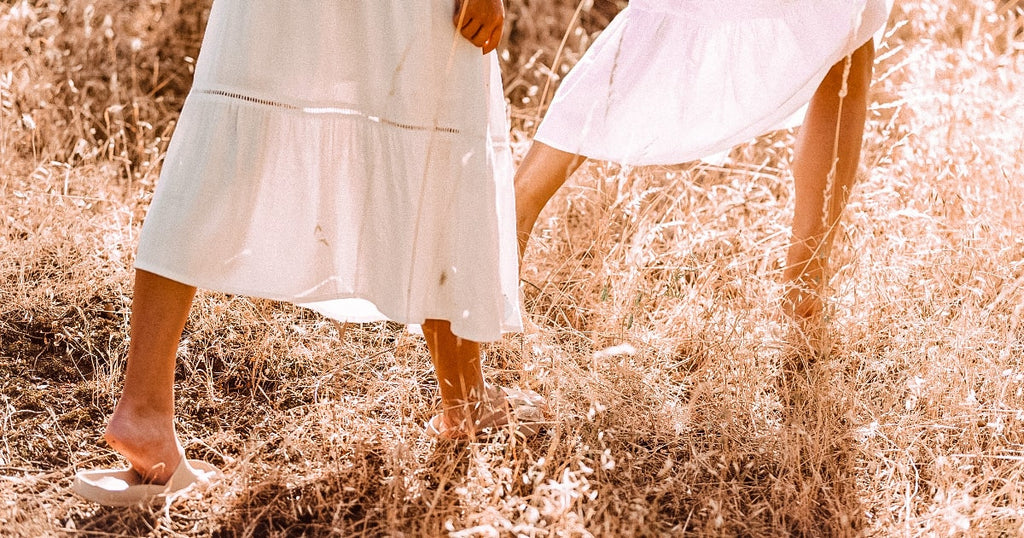
As promised, here are some of my favorite fashion funding resources:
FASHION STARTUP GRANTS
AMBER GRANTS FOR WOMEN – “By applying just once for the $10,000 monthly Amber Grant, you automatically become eligible for that month’s $10,000 Business specific grant”
HELLO ALICE – “From a grant to jazz up your online storefront to a loan to help you stock up on inventory, the Small Business Funding Center connects you with the capital you need to launch and grow your small business.”
TORY BURCH FELLOW PROGRAM – “1- year fellowship, premier peer network, $5,000 grant, and a trip to the Tory Burch offices in NYC.”
CARTIER WOMENS INITIATIVE – “Grants up to $100,000, training, international exposure, community, and more.”
FASHION CAPITAL PARTNERS
THE GOOD FASHION FUND (GFF) – “financing the implementation of highly impactful & disruptive production technologies in Asia. The Fund targets long term USD debt investments in textile & apparel manufacturers in India, Vietnam & Bangladesh.”
HEED CAPITAL – “We back purpose-driven founders across the globe who transform the world’s biggest challenges into the world’s biggest business opportunities.”
CLOSED-LOOP PARTNERS – “a New York based investment firm that provides equity and project finance to scale products, services and infrastructure at the forefront of the development of the circular economy.”
STYLE WITH SUBSTANCE VENTURES – “ The investment arm of Style With Substance, a company that supports innovation and sustainability in the fashion and lifestyle industries.”
BEYOND FORM – “a venture studio building and investing in fashion tech.”
ALANTE CAPITAL – “investing in the future of sustainable apparel.”
SMALL BUSINESS LOAN CALCULATOR
CLICK HERE TO CALCULATE YOUR SMALL BUSINESS LOAN
ALTERNATIVE SMALL BUSINESS FRIENDLY LOAN OPTIONS
CLEARCO – “Equity-free. Bias-free. Hassle-free. E-Commerce funding built by Founders for Founders.”
